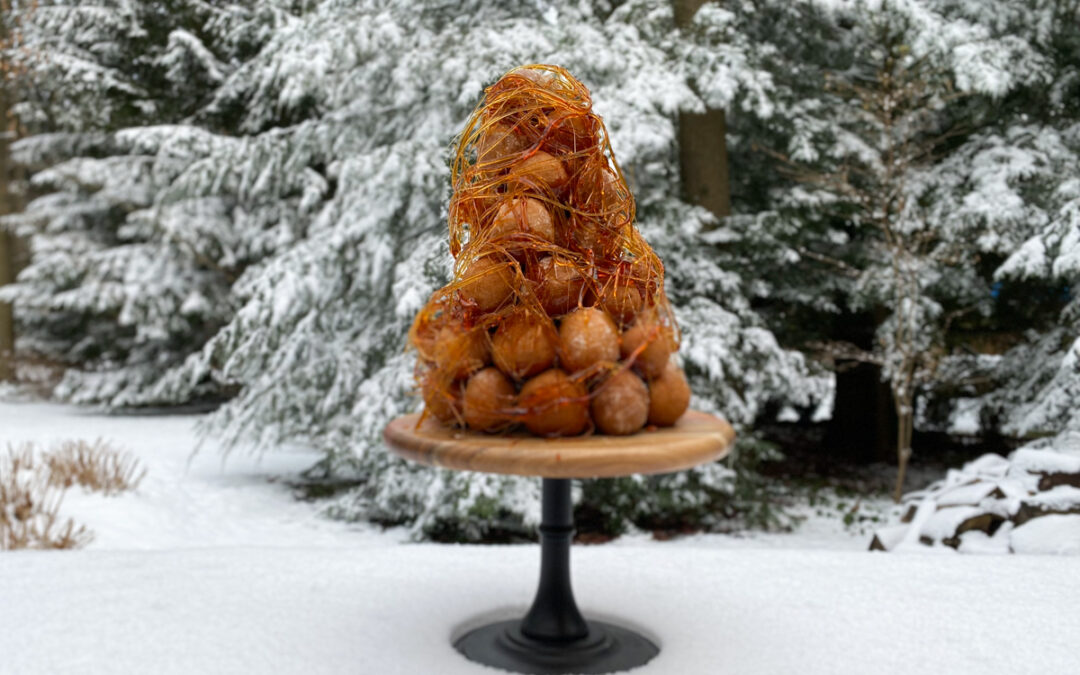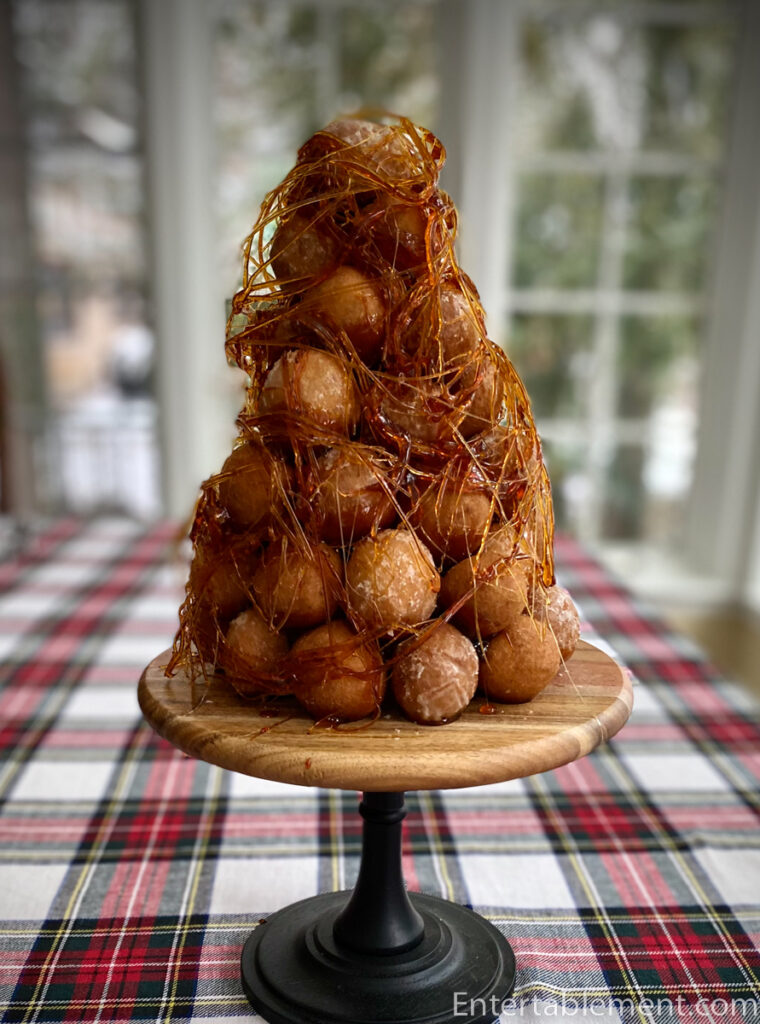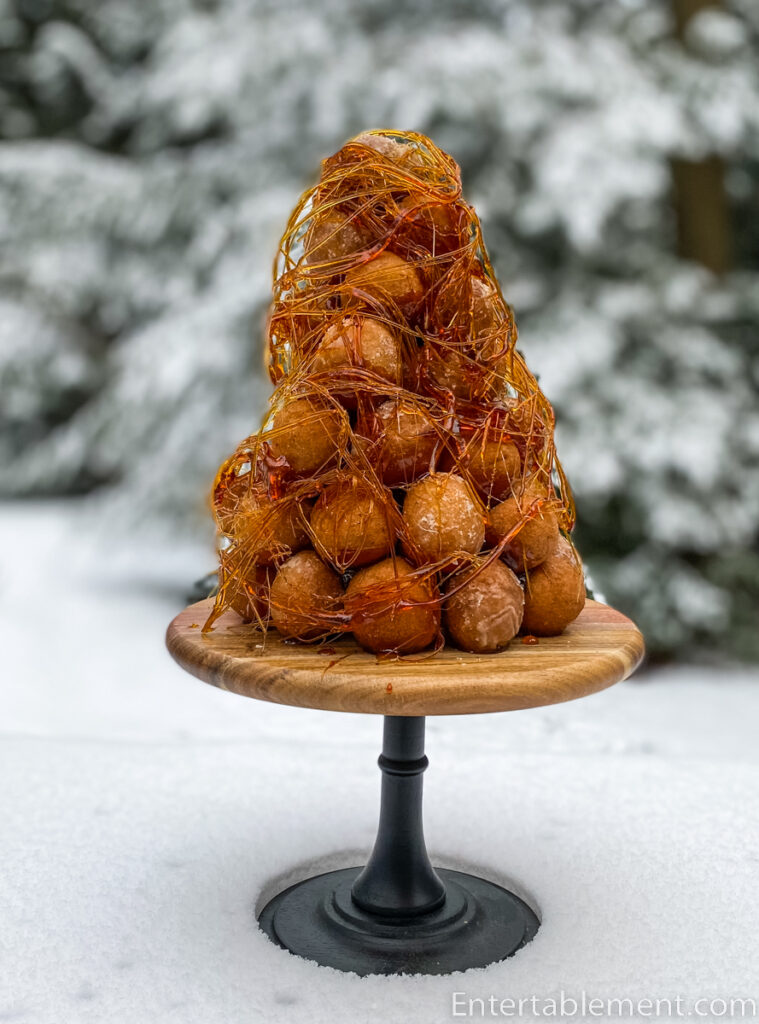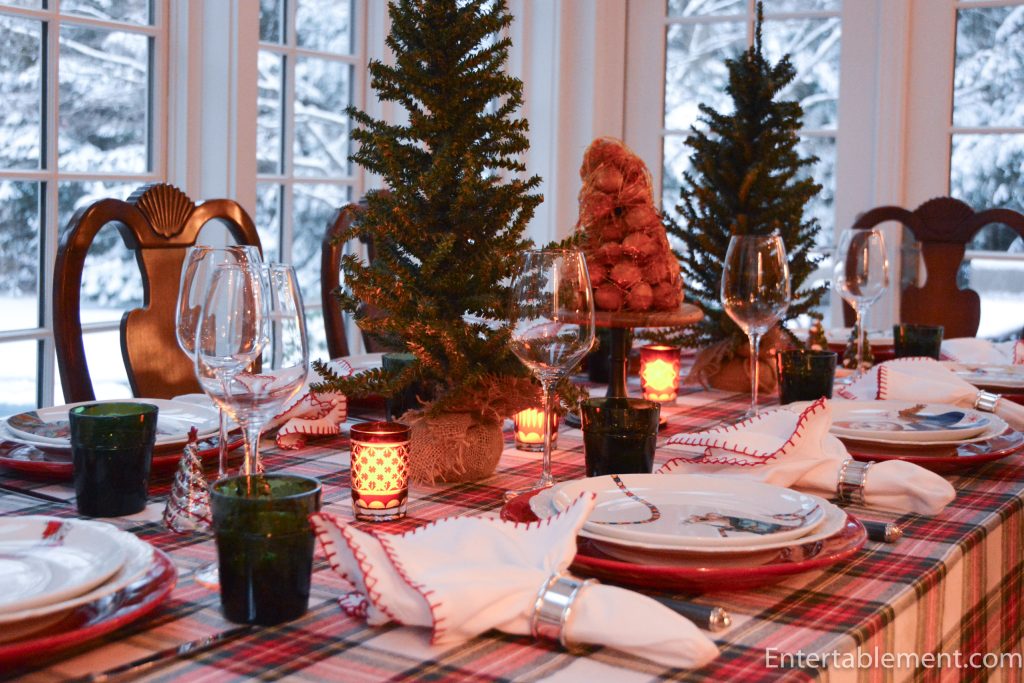Swirls of spun sugar surround a tower of delectable treats, in this case, old-fashioned doughnut holes! Traditional croquembouche is made with small puffs of choux-pastry filled with pastry cream. This simplified version is just as pretty, with very little effort. Don’t be intimidated by the caramel; it comes together easily, made with only water and granulated sugar.
It makes a wonderful centrepiece for your dessert table at Christmas or for a get-together with friends and family. The kids will love demolishing it.
I used it as a centrepiece for a Dapper Animals Christmas table, set with dessert plates designed by Rachel Kozlowski for West Elm. What could be more fun than a delicious dessert served on goofy animal plates?

Doughnut Hole Croquembouche
Traditional Croquembouche is a tower of pastry-cream-filled choux pastry puffs, also used to make profiteroles. This version takes a quick and easy shortcut, substituting old-fashioned doughnut holes. Easy peasy!
The caramel in this recipe contains no butter or cream; it’s the hard, crunchy kind, perfect for “gluing” together the doughnut holes and for making the magical spun sugar decoration surrounding the tower.
Ingredients
You will need about three dozen Old Fashioned Doughnut Holes (or Timbits, as we Canucks call them). You might want to start with four dozen so you can choose the most nicely shaped and let the inevitable snacking assistants pilfer the discards.
For the Caramel
- 600 g or 3 c granulated sugar
- 125 ml or ½ c water
- Gold leaf, optional
Instructions
Have all your ingredients to hand and the base of the croquembouche (plate or cake stand) chosen and available. You will need to work quickly to build the tower once the caramel is ready. You may want to do a “dry run”, arranging eight doughnut holes around the edge of your plate to ensure it’s the correct size.
Fill a large roasting pan or sink with about 1 inch of cold water. In a medium-sized heavy pot, stir together the sugar and water until it looks like wet sand. Over medium heat, stir until the sugar melts (4 minutes). Increase the heat and bring the mixture to a boil; stop stirring. Cook, gently swirling the pot occasionally so the mixture browns evenly, until it’s light amber in colour and reaches 320°F (about 8 minutes). You may need to brush down the sides of the pot with a wet pastry brush if crystals form. Remove immediately from the stove and place the bottom of the pot in the pan or sink of cold water to stop the cooking and prevent the caramel from turning too dark.
The caramel is very hot, so work quickly and carefully, being sure not to touch the caramel with your fingers. Trust me on this. It’s scalding hot and causes an instant, nasty burn. Dip the side of one doughnut into the caramel and place it on the edge of the plate, caramel-side down. Repeat with seven more doughnuts to form a circle. Continue dipping doughnuts in caramel, building doughnuts on top of each other in smaller and smaller rings until the tower is complete. If the caramel becomes too hard to use, reheat it on low-to-medium heat—just enough to loosen it.
Dip a fork in the caramel and quickly swipe it back and forth over a work surface, repeatedly dipping in caramel as needed to form a web of long, thin strands about 4 inches wide. Very gently, lift the strands (they’ll be cool enough not to burn), gathering them slightly in the centre and draping lightly around the croquembouche like a sash. Repeat once or twice more, wrapping the spun sugar around the croquembouche. If desired, use a small paintbrush to attach small pieces of edible gold leaf sporadically on the doughnuts.
The Doughnut HoCroquembouche can be made up to 10 hours in advance.
Notes
Adapted from Food and Wine Old Fashioned Doughnut Croquembouche.





